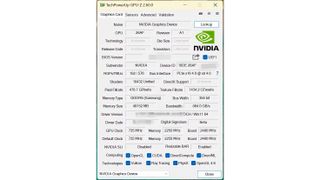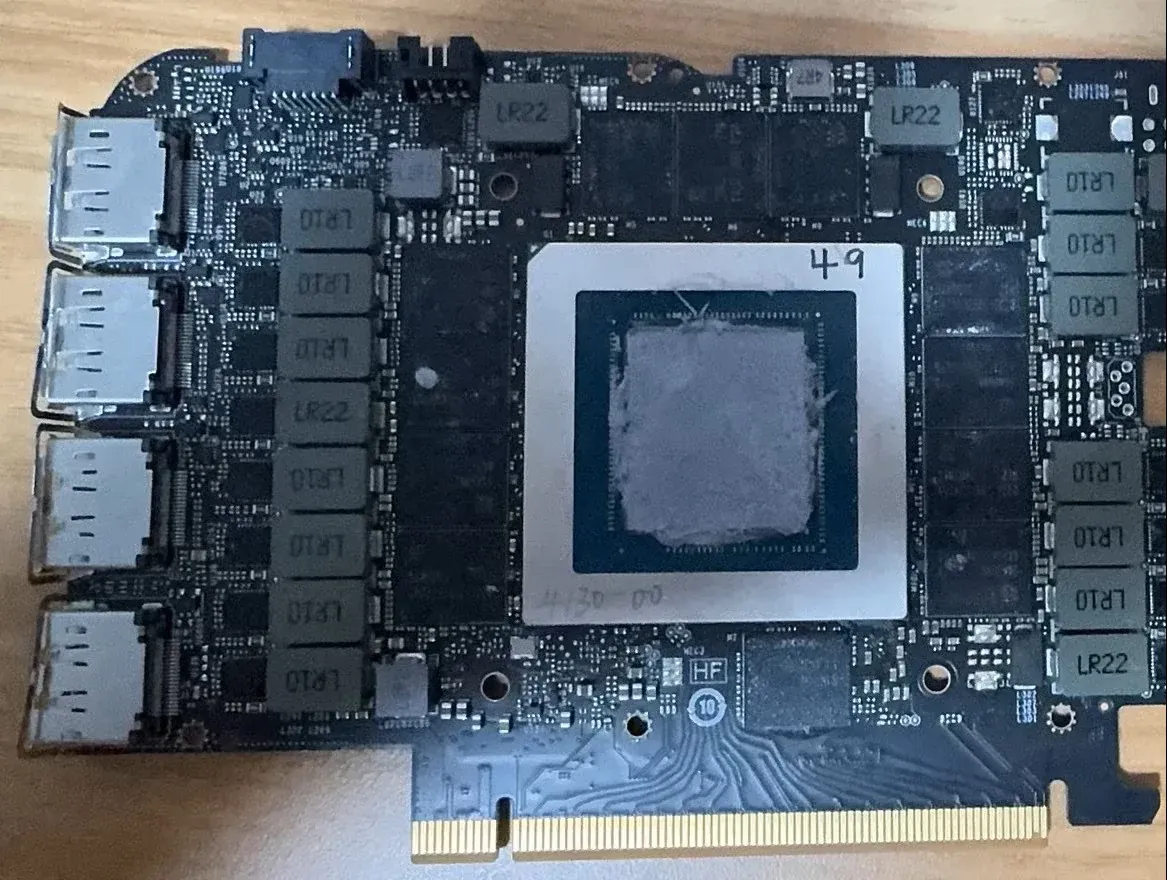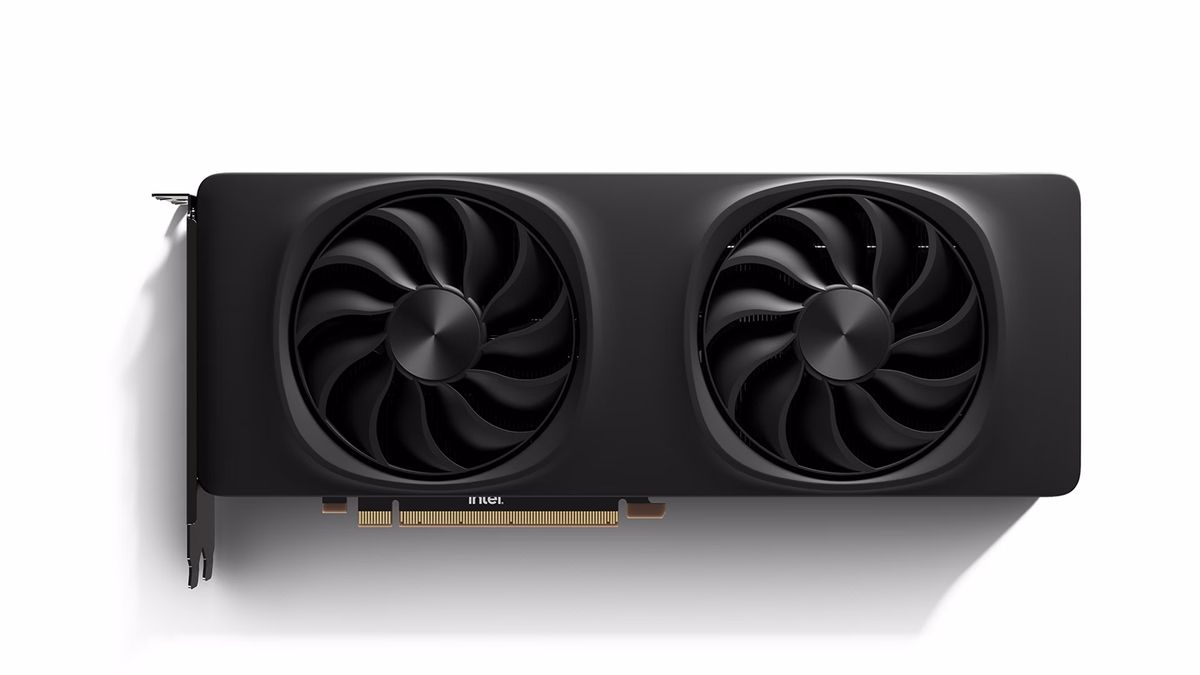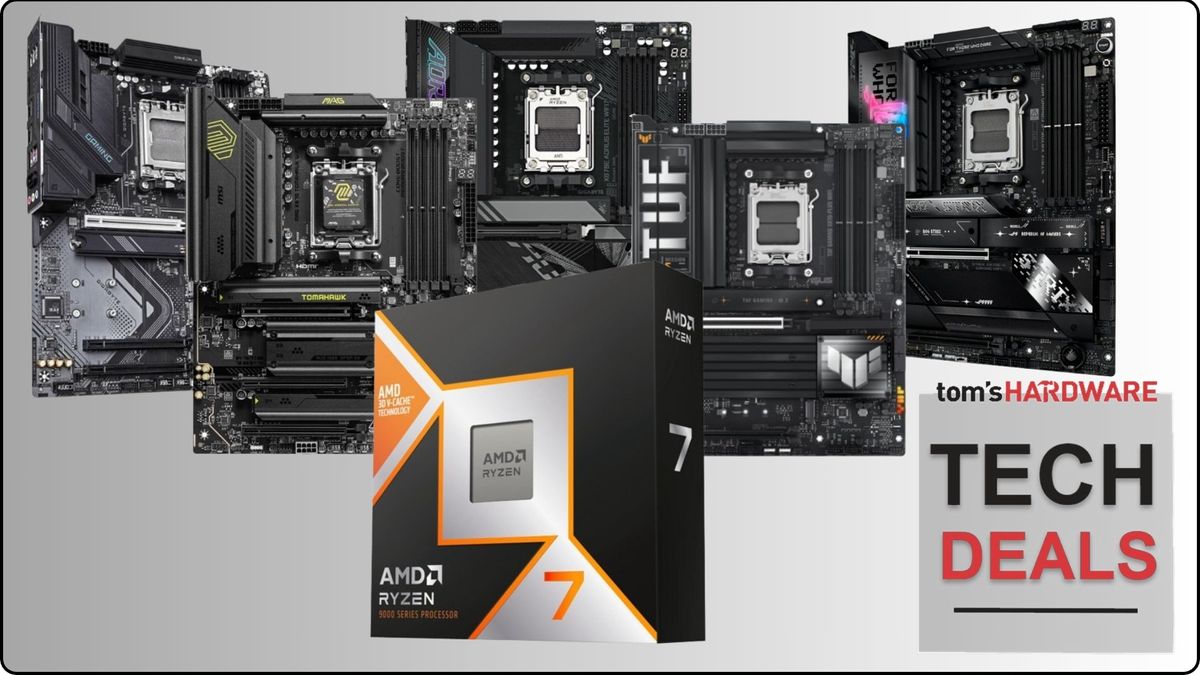Specifications of Nvidia's unreleased RTX Titan Ada GPU have allegedly surfaced on Reddit. A GPU-Z screenshot and photograph shared by FluxRBLX on the Nvidia subreddit reveals purported RTX Titan Ada GPU specifications featuring a fully enabled AD102 GPU and a whopping 48GB of VRAM.
The GPU-Z screenshot reveals many details on the purported Titan Ada GPU, including core counts, memory configuration, device ID, and more. The GPU purportedly has 18,432 shaders (CUDA cores), 192 ROPs, 576 TMUs, a pixel fillrate of 478.1 GPixel/s, and a Texture Fillrate of 1,434.2 GTexel/s. The memory subsystem is purportedly composed of 49GB of capacity (in reality, 48GB), featuring GDDR6 (non-x) ICs on a 384-bit wide memory interface with 864 GB/s of memory bandwidth.
Base clock speeds are significantly lower than any outgoing RTX 40 series (Ada Lovelace) GPU, with GPU-Z reporting a clock speed of just 735 MHz. However, boost clocks look far more conventional, rated at 2,490 MHz. The abnormally low base clocks are inevitably a byproduct of testing, as this GPU is, after all, purportedly a prototype.
Compared to the RTX 4090, the RTX Titan Ada outclasses it in shader count and memory capacity. The Titan Ada features a fully enabled AD102 die, which would have made it the only RTX-branded GPU in the 40-series family to have the fully unlocked die. The RTX 4090 has access to almost 90% of the AD102 die, but not all. Memory capacity is also doubled on the Titan Ada GPU, inevitably due to stacking the GDDR6 modules on the top and bottom of the PCB, similar to the RTX 3090 or RTX 6000 Ada. GDDR6 manufacturers don't make GDDR6 memory chips with a capacity greater than 2GB, making this configuration the only option to achieve 48GB on the Titan-class GPU.

One area where the RTX 4090 outperforms the Titan Ada is in memory bandwidth, thanks entirely to its GDDR6X memory. The Titan Ada goes for slower GDDR6 memory modules, which reduces its bandwidth potential compared to the RTX 4090. Nvidia apparently didn't plan to use the speedier GDDR6X modules. One could argue that cooling was a concern due to the multi-stacked layout of the memory chips; however, the RTX 3090 was shipped in the same configuration as the GDDR6X modules. Admittedly, the RTX 3090 suffered from memory temperature issues.
The Reddit poster also shared a PCB shot of the supposed RTX Titan Ada GPU. Assuming the image is legitimate, the PCB looks virtually identical to equivalent RTX 4090 PCBs. The giant AD102 die is in the middle, flanked by 12 of 24 memory ICs. The GPU and memory power delivery components border the right and left of the PCB. The PCB pictured is likely a reference design, not the "Founders Edition" variant.
Since this GPU was never released, Nvidia has never claimed or explained why it never brought the RTX Titan Ada to the market. However, Nvidia likely canceled the product due to internal competition that would have arisen between it and workstation-class GPUs, such as the RTX 6000 Ada that sells for $6,800. Furthermore, AMD didn't have an answer for the RTX 4090, so the RTX Titan Ada might have been overkill, at least for the average gamer.

 1 day ago
11
1 day ago
11









 English (US) ·
English (US) ·